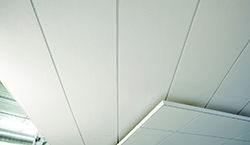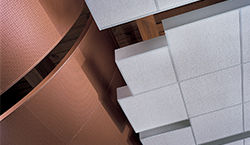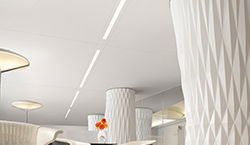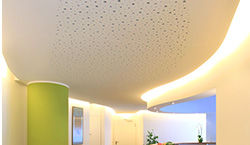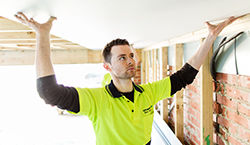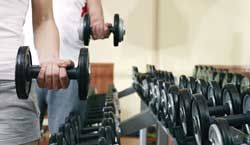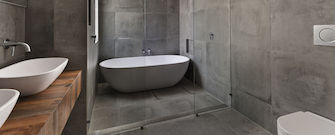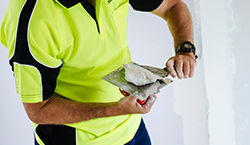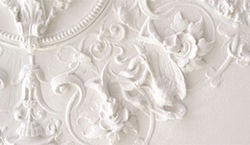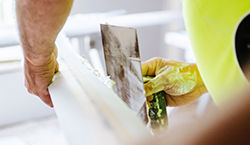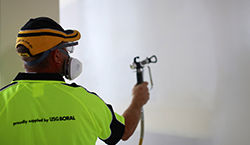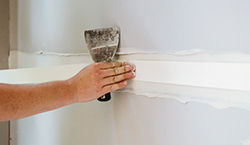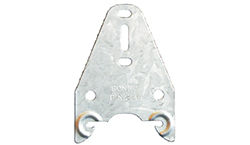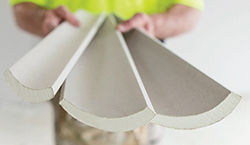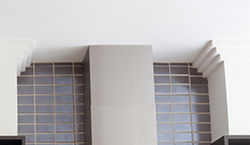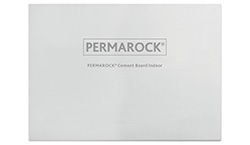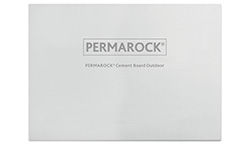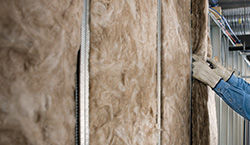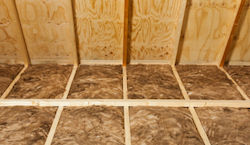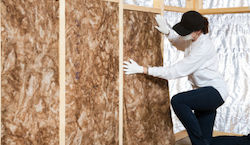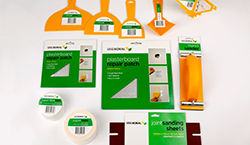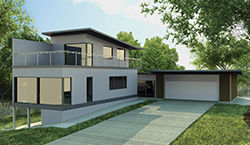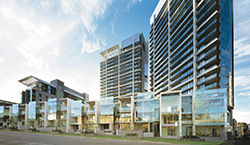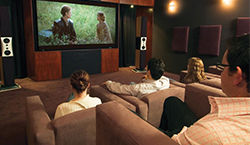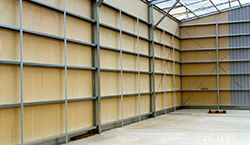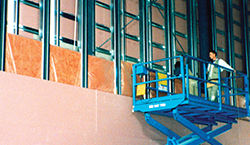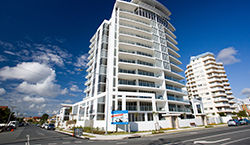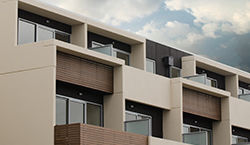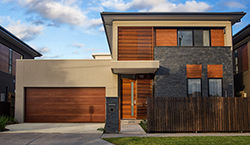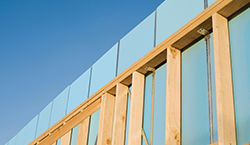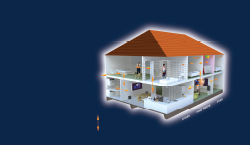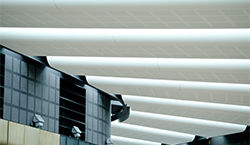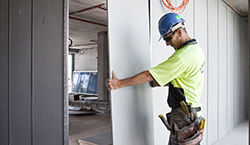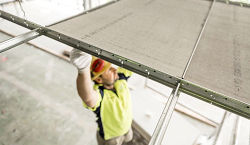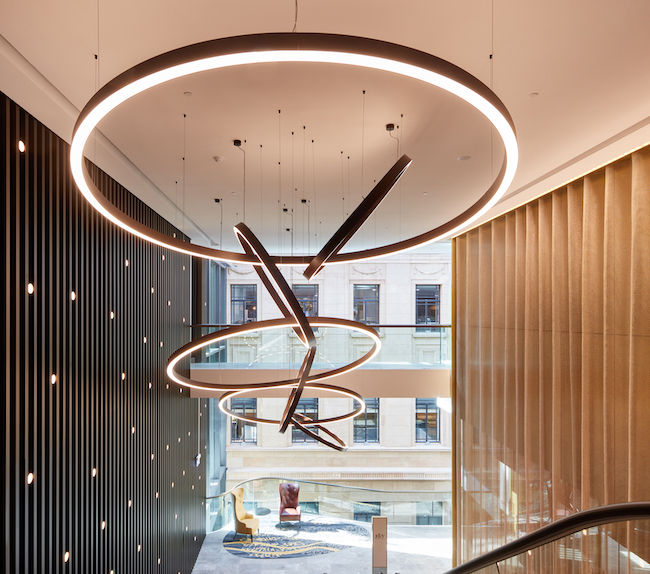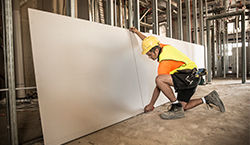-
AUSTRALIA, ENGLISH
- Contact
- Where to Buy
- Favourites
-
Looking for product documents?
Try our Document Finder
-
About Knauf
-
About Knauf
-
About Us
-
About Us
-
- Careers
- Code Of Conduct
- Supplier Information
-
-
Products
-
Products
-
Ceilings
-
Ceilings
- Acoustic Panels & Ceiling Tiles
ACOUSTIC PANELS & CEILING TILES
- Acoustic Suspension Systems
ACOUSTIC SUSPENSION SYSTEM
- Drywall Suspension Systems
DRYWALL SUSPENSION SYSTEM
- Stratopanel Ceiling System
STRATOPANEL® CEILING SYSTEM
-
-
Plasterboard
-
Plasterboard
- SHEETROCK® Plasterboard
SHEETROCK® Plasterboard
- Technical Boards
TECHNICAL Plasterboard
- Multi-Application Boards
Multi-Application Boards
- Water-Resistant Plasterboard
Water-Resistant Plasterboard
-
-
Finishes
-
Finishes
- Jointing Compounds
Jointing Compounds
- Speciality Plasters
Specialty Plasters
- Adhesives
Adhesives
- Primers
Primers
- Joint Tapes
Joint Tapes
-
-
Steel Framing
-
Steel Framing
- Rondo® Metal Components
Rondo® Metal Components
-
-
Cornice
-
Cornice
- SHEETROCK® Cove
SHEETROCK® Cove
- Decorative Cornice
Decorative Cornice
-
-
Cement Board
-
Cement Board
- Cement Board Indoor
Cement Board Indoor
- Cement Board Outdoor
Cement Board Outdoor
-
-
Insulation
-
Insulation
- Wall Batts
Wall Batts
- Ceiling Batts
Ceiling Batts
- Acoustic Range
Acoustic Range
- Ecose Technology
ECOSE® Technology
-
-
Plastering DIY
-
Plastering DIY
- DIY Cornice Adhesive
DIY Cornice Adhesive
- DIY Patching Plaster
DIY Patching Plaster
- Total Joint Finish
Total Joint Finish
- Stud Adhesive
Stud Adhesive
- Tools & Accessories
Tools & Accessories
-
-
-
Solutions
-
Solutions
-
Segment Solutions
-
Segment Solutions
- Wet Area Solutions for Architects
Wet Area Solutions
-
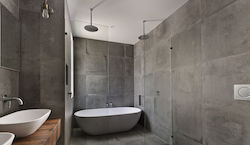
Wet Area Solutions
Water resistant plasterboard obtains its impressive water-resistant properties from a range of special ingredients added to the core of the board. Its moisture resistant core limits water wicking up the board causing damage to the board itself or the surface finish.
- Wet Area Solutions for Trade
Wet Area Solutions
-

Wet Area Solutions
Water resistant plasterboard obtains its impressive water-resistant properties from a range of special ingredients added to the core of the board. Its moisture resistant core limits water wicking up the board causing damage to the board itself or the surface finish.
- Health Care
Health Care
- Education
Education
- Bushfire Protection
Bushfire Protection
- Multi-Residential
Multi-Residential
-
-
Plasterboard Systems
-
Plasterboard Systems
- Systems+
Systems+
- CinemaZone® System
CinemaZone®
- Fireclad® System
Fireclad® Fire-rated External Wall System
- Firewall® System
Firewall® System
- IntRwall® System
IntRwall® System
- Multiframe™ System
Multiframe™ System
- NeighbourZone™ System
NeighbourZone™ System
- OutRwall® System
OutRwall® System
- Partiwall® System
Partiwall® Separating Wall System
- Quiet Living™ System
Quiet Living™ System
- Cross Laminated Timber Systems
-
-
Science
-
Science
- Acoustics
Acoustics
- Fire Performance
Fire Performance
- Seismic
Seismic
-
-
-
Inspiration
-
Inspiration
-
For Architects / Designers
-
For Architects / Designers
-
Knauf for Architects / Designers
We believe we can change the way buildings are designed, built and occupied by delivering innovations that help you work smarter, do more and build better.
-
-
For Builders / Installers
-
For Builders / Installers
-
Knauf for Builders / Installers
Proudly Supporting those who Build, every step of the way.
-
-
For Homeowners
-
For Homeowners
-
Knauf for Homeowners
Our plastering products, tools & accessories are designed for the home renovator/builder making minor alterations or repairs to plasterboard walls & ceilings.
-
-
-
Resources & Tools
-
Resources & Tools
-
Acoustic Ceilings e-Estimator
-
Acoustic Ceilings e-Estimator
-
- Plasterboard Installation Manual
- eSelector
- BIM WIZARD
- Partiwall Estimator
-
Systems+ Plasterboard Systems Guide
-
Systems+ Plasterboard Systems Guide
- FEATURES
- TRY IT FOR YOURSELF!
-
See All
-
- Document Finder
-
TecASSIST
-
TecASSIST™ - Knauf
-
-
CAD Finder
-
CAD Finder
-
-
Knauf Warranty
-
Knauf Warranty
- Knauf Warranty
-
See All
-
-
-
What's New
-
What's New
- News And Promotions
- Press
-
AUSTRALIA, ENGLISH
- Contact
- Where to Buy
- Favourites
- My Downloads
-
User Profile
User Profile
- Manage Profile
- Logout
-
Looking for product documents?
Try our Document Finder
SUWg4HBaYP13VYhuSncYIghttps://myaccount.knaufapac.com -

Guide to Plasterboard Ceiling care for Homeowners
- Past Project Inspiration | Knauf AU
- Renovation Advice for Homeowners | Knauf AU
- Guide to ceilings care for homeowners
How to manage ceiling safety and longevity over the life of a home
Many consumers may not be aware of the crucial role they play in keeping their home safe and strong in the long run, whether they’re building, or looking for a new home to buy.
In addition to basic home maintenance tasks like cleaning gutters and repainting walls, homeowners need to proactively monitor the performance of their entire home. This is especially pertinent when it comes to ceilings, which can be easily overlooked by homeowners.
Thanh Huynh, Engineering Services Director, Knauf said, “Most homeowners don’t spend a lot of time looking at their ceilings, which means that they could miss early warning signs that the ceiling could be under stress. There are various factors that could cause a ceiling to fail, which can be incredibly distressing to homeowners. Being aware of these factors and checking ceilings regularly should form a key part of any responsible homeowner’s regular maintenance activities. By paying attention to early warning signs, consumers can avoid the cost and distress that comes with a failed ceiling system.”
As a leading manufacturer of premium building materials, Knauf is committed to ensuring consumers receive the highest-quality products, installed to industry standards.
Preventing a ceiling failure starts with correct installation of the ceiling system as the home is being built.
For consumers building their home, it’s important to use qualified industry professionals for every aspect. Ceilings should be installed in accordance with manufacturer installation guidelines and Australian Standards, and ceiling materials and insulation must comply with the standards set by the Building Code of Australia (BCA) including safety, health, amenity and sustainability.
Specifically, consumers building their own home should check to ensure the installers are adhering to manufacturer installation guidelines and Australian Standards, maintaining a clean building site, and not allowing building materials to pile up and gather dust. When purchasing an existing home, buyers should ensure their building inspection includes a thorough review of the ceiling systems and, if there are any issues, these should be dealt with urgently.
Ceilings should be secured by both adhesive and screws fixed into the ceiling joists. The most common causes of ceiling failure include: the use of non-compliant (short) screws; wall board installed incorrectly as ceiling board; lack of use of temporary blocks while stud adhesive cures and inadequate application of stud adhesive; lack of roof sarking to protect against water ingress and weight overload on ceilings such as air-conditioning units and ceiling fans installed without adequate engineered framing support.
“Rarely do ceilings fail with no warning. There are usually clear signs that a ceiling needs to be repaired well before it hits the point of failure. Therefore, it’s important for homeowners to be on the lookout for these signs and contact their builder or local government building authority as soon as they see any of these signs. Homeowners should engage a suitably competent ceiling contractor who can brace the ceiling and permit further investigation into potential causes of ceiling instability prior to refixing the plasterboard ceiling.”
Knauf has identified five ways homeowners can care for their ceilings to help prevent failure:
1. Don’t store household items in the roof space unless additional supporting framework is engineered and installed. Similarly, don’t install heavy mechanical appliances or light fixtures unsupported on the ceiling board.
2. Address leaks in the roof space immediately, including removing affected insulation and moisture-damaged plasterboard. Inspect the roof and ceiling after heavy rainfall.
3. Check that all exhaust fans are ducted to the outside air and are not discharging into the ceiling space and that air conditioning ducts aren’t damaged, with conditioned air leaking into the ceiling space.
4. Inspect the ceiling system after work has been conducted in the roof space to ensure there has been no substantial movement of the ceiling framing or plasterboard lining, which can result in screw pops and loss of adhesion of the fasteners.
5. Ensure cross-ventilation to avoid the heat and humidity build-up that can cause plasterboard defects.
According to Thanh, “With proper installation and maintenance, the ceiling should last for the life of the home. Homeowners must take the time to look up periodically to ensure their ceiling system is still performing as intended. The moment any issues are discovered, contact an expert who can investigate the causes and recommend repairs and reinforcement to ensure the ceiling stays safely in place for many years to come.”
For more information, refer to the Plasterboard Ceiling Installation & Care - A Guide for Homeowners or the Knauf Plasterboard Installation Manual available on the Resources & Tools page.




